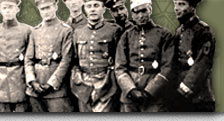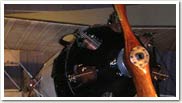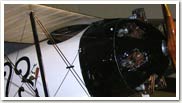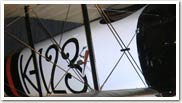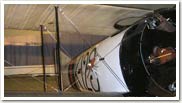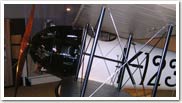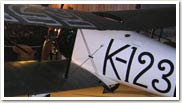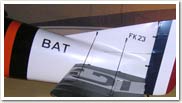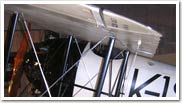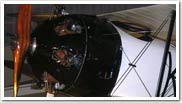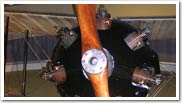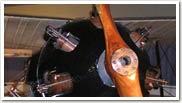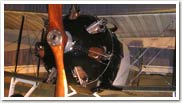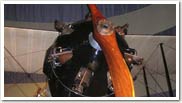B.A.T. FK 23 Bantam
exhibited at the Lelystad Aviodrome Museum
The aircraft designer Frederick Koolhoven first design for the British Aerial Transport Company (BAT) was the F.K.22 single-seat fighter. It was a two-bay biplane of wooden construction. It was planned to have a 120hp (89kW) A.B.C Mosquito radial engine but the failure of this engine led to the installation of the 170hp (127kW) A.B.C.Wasp I in the first and third aircraft. The second machine was fitted with a 100hp (75kW) Gnome Monosoupape rotary engine and was the first to fly at Martlesham Heath in January 1918. The original contract called for six development aircraft but three aircraft were built as the F.K.23 Bantam I, the second prototype then being renamed the Bantam II. The Bantam I was the same wooden structure but was slightly smaller. Two further prototypes of the larger design were also built followed by at least 9 development aircraft. One aircraft was delivered to the Royal Aircraft Establishment on 26 July 1918, one was delivered to the French at Villacoublay and a further aircraft to the United States Army Air Corps at Wright Field in 1922.
The production Bantam had to be modified due to unsatisfactory spin characteristics of the prototypes. Continuous engine problems and the contraction in size of the Royal Air Force were factors in no more orders for the Bantam. Koolhoven returned to Netherlands with one aircraft were it was re-engined with a 200hp (149kW) Armstrong Siddeley Lynx radial engine. Several examples were operated as civil racing aircraft.
A side-by-side two-seat aerobatic and racing version was developed as the F.K.27 but only one was built.
(credits: Wikipedia Article on the B.A.T. FK 23 Bantam )
Copyright information:
All pictures on this pages are © Kees Kort , who kindly contributed to IdFlieg.
Please note that these pictures are for private use only!




